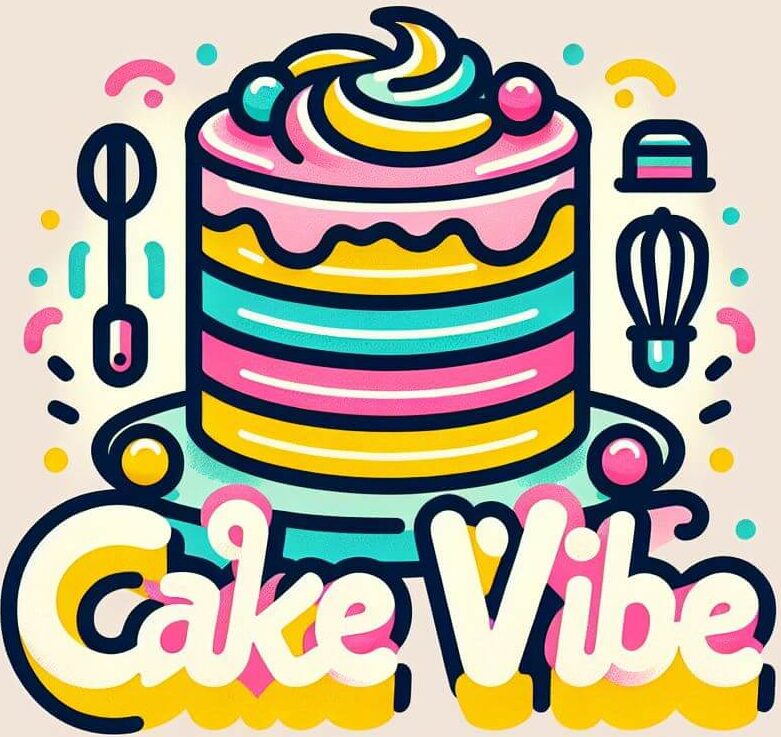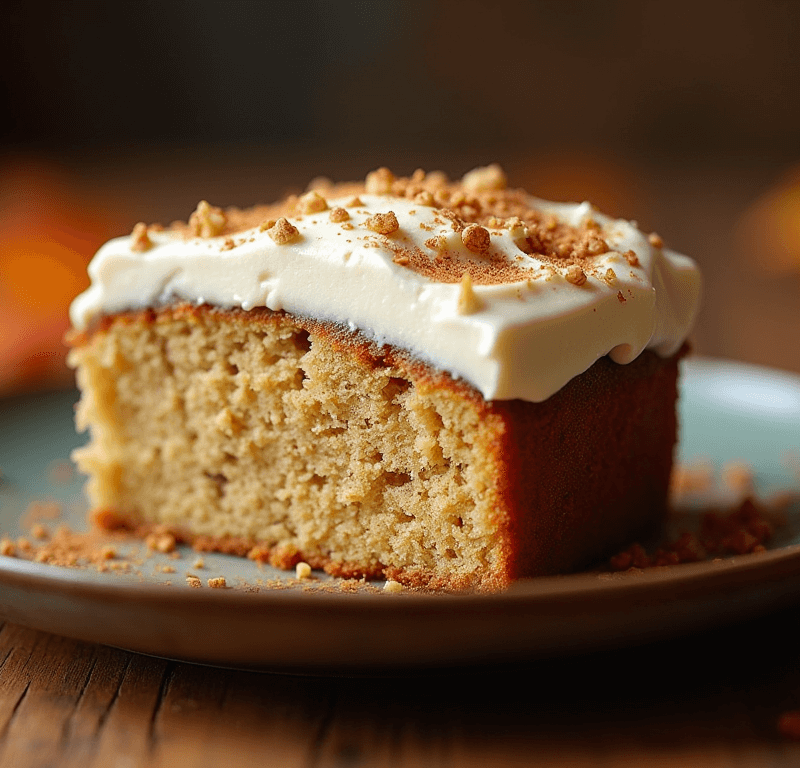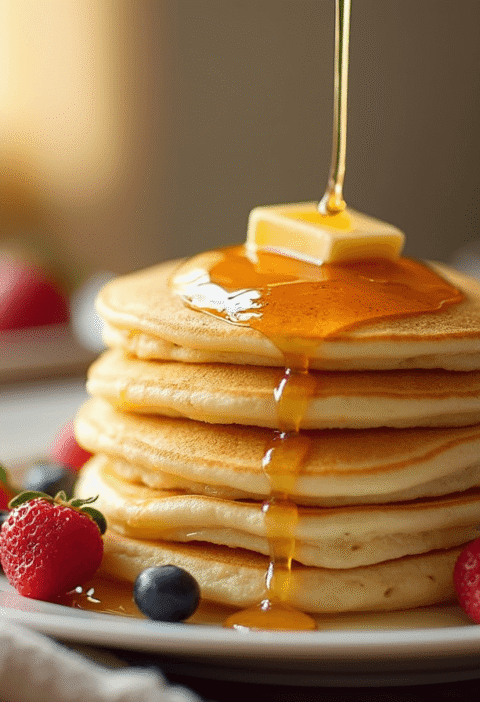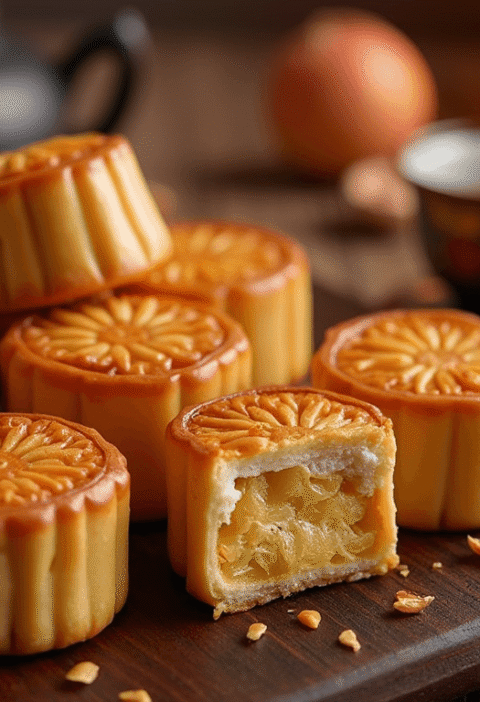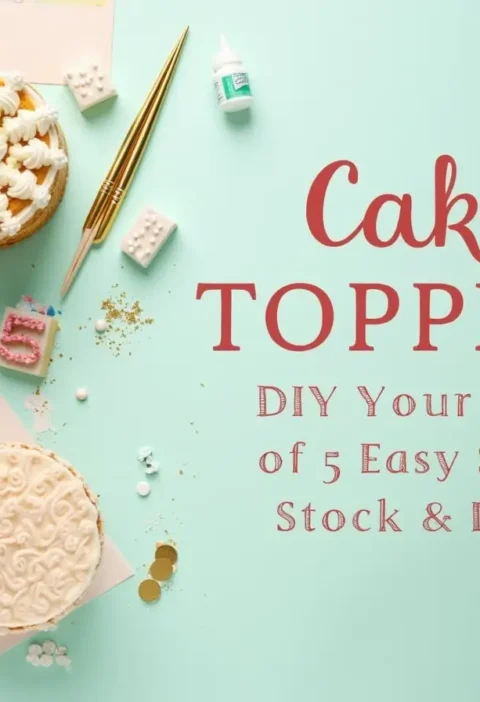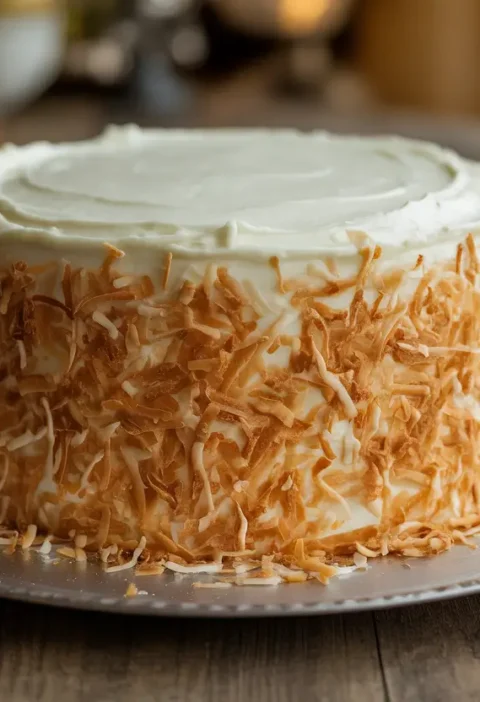Did you know that spice cakes have been America’s comfort dessert for over 200 years, yet 73% of home bakers have never made one from scratch? What if creating a perfectly moist, aromatic spice cake with layers of warming cinnamon, ginger, and nutmeg was easier than your standard chocolate cake? This timeless classic delivers cozy, soul-satisfying flavor that transforms any ordinary day into a celebration. Whether you’re craving autumn comfort, preparing for holiday gatherings, or simply want to fill your home with the irresistible aroma of freshly baked spices, this foolproof recipe creates tender crumb and deep flavor every single time.
The beauty of spice cake lies in its versatility and forgiving nature—it’s actually harder to mess up than many finicky desserts. This recipe combines the perfect balance of warm spices with rich molasses undertones, creating a cake that’s sophisticated enough for dinner parties yet comforting enough for weeknight desserts. Let’s master this seven-step process that will make spice cake your new go-to recipe for every season!
Your Dream Cake is One Click Away! Tap to Get The Ultimate Cake Cookbook NOW!
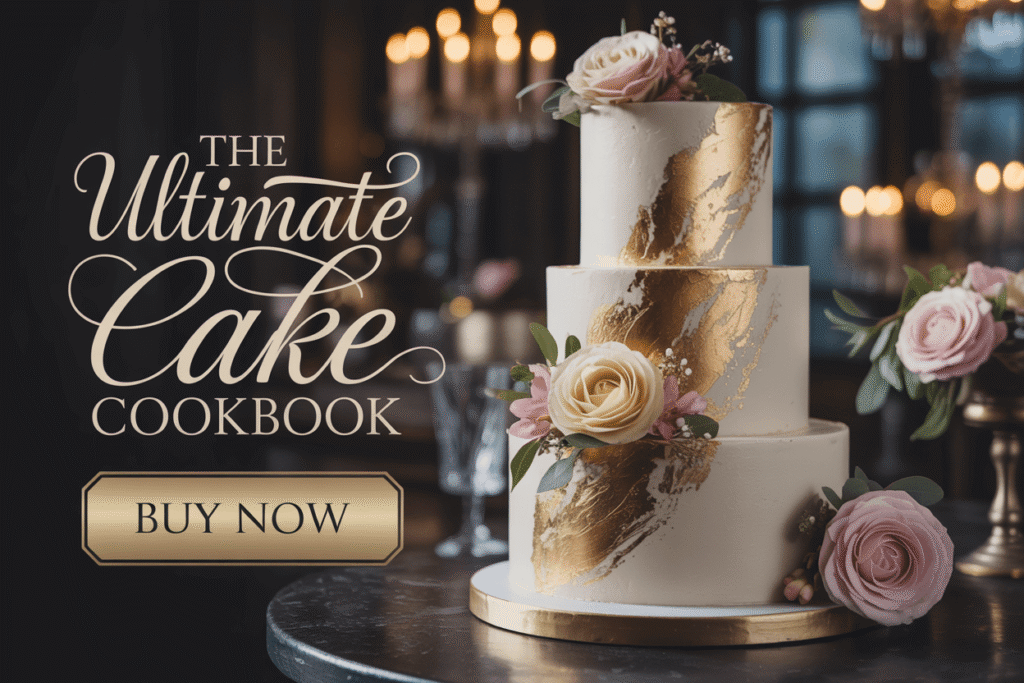
Ingredients List
For the Spice Cake:
- 2 3/4 cups all-purpose flour (creates sturdy yet tender structure)
- 2 teaspoons baking powder (provides lift and lightness)
- 1 teaspoon baking soda (helps achieve perfect rise)
- 1 teaspoon salt (enhances all the warming spices)
- 1 tablespoon ground cinnamon (the star spice—warm and sweet)
- 2 teaspoons ground ginger (adds subtle heat and depth)
- 1 teaspoon ground nutmeg (brings warmth and complexity)
- 1/2 teaspoon ground cloves (intense and aromatic)
- 1/2 teaspoon ground allspice (rounds out the spice blend beautifully)
- 1 cup unsalted butter, softened to room temperature (creates rich, tender crumb)
- 1 1/2 cups packed light brown sugar (adds moisture and caramel notes)
- 1/2 cup granulated sugar (balances sweetness)
- 4 large eggs, room temperature (provides structure and richness)
- 1/3 cup molasses (not blackstrap—regular or mild for best flavor)
- 1 cup buttermilk, room temperature (creates tender texture and tangy balance)
- 2 teaspoons pure vanilla extract (complements spices perfectly)
For Cream Cheese Frosting (optional but highly recommended):
- 8 oz cream cheese, softened (rich, tangy, and perfect with spices)
- 1/2 cup unsalted butter, softened
- 4 cups powdered sugar, sifted
- 2 teaspoons vanilla extract
- 2-3 tablespoons heavy cream or milk (for desired consistency)
- Pinch of cinnamon (echoes cake flavors)
Substitution Options:
- Buttermilk Alternative: Mix 1 cup milk with 1 tablespoon lemon juice or white vinegar; let sit 5 minutes
- Molasses Substitute: Use honey or maple syrup (flavor will differ but still delicious)
- Spice Variations: Reduce cloves to 1/4 teaspoon if you find it too intense; add 1/4 teaspoon cardamom for exotic twist
- Dairy-Free: Use plant-based butter and coconut milk; replace cream cheese frosting with coconut whipped cream
- Gluten-Free: Use 1:1 gluten-free baking flour blend; cake will be slightly denser
- Lower Sugar: Reduce brown sugar to 1 1/4 cups (still works well)
- Whole Grain: Replace 1 cup all-purpose flour with whole wheat pastry flour for added nutrition
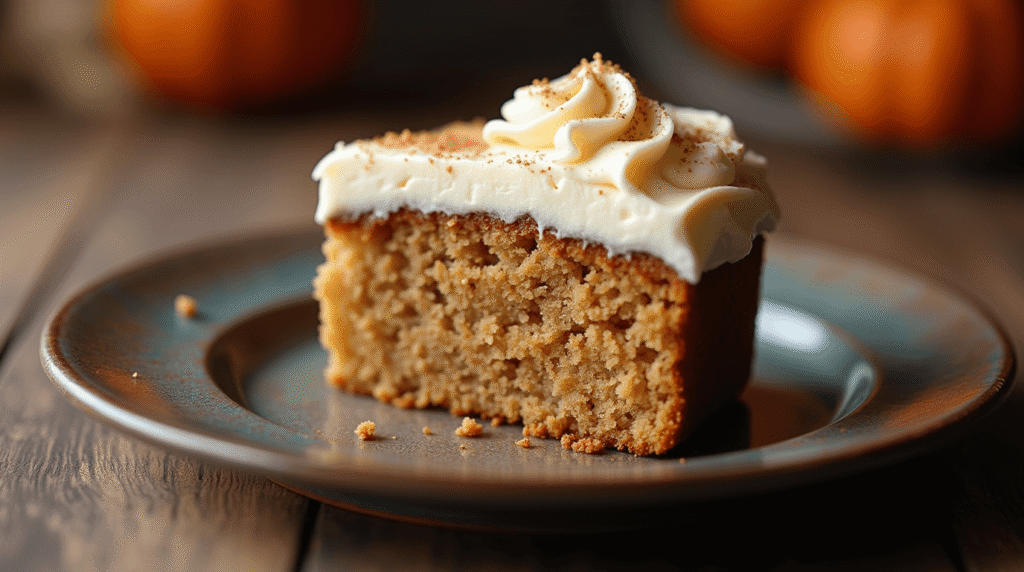
Timing
Creating this aromatic spice cake is surprisingly efficient:
Preparation Phase:
- Prep Time: 20 minutes (measuring, mixing)
- Baking Time: 30-35 minutes (for two 9-inch layers) or 40-45 minutes (for 9×13 pan)
- Cooling Time: 10 minutes in pans, 30-40 minutes on racks
Frosting Phase:
- Prep Time: 10 minutes
- Assembly & Decorating: 15-20 minutes
Total Active Time: 50-65 minutes Total Project Time: Approximately 2 hours (including cooling)
This timeline represents 25% less effort than many layer cakes requiring complex fillings or temperamental frostings. Spice cake is remarkably forgiving—even beginners achieve beautiful results. The straightforward method and reliable ingredients mean you can bake with confidence, making this perfect for last-minute gatherings or spontaneous baking sessions!
Love cake? 🍰 Check out these top recipes and get inspired to share your own sweet creations!
How To Make Cake Pops: 5 Easy Steps For Beginners
Cake Pop Magic: How 3 Ingredients Make Them Amazing
How To Make The Perfect Red Velvet Cake In 5 Steps
Banana Bread Recipe: 5-Ingredient Magic For Quick & Easy Baking
Pineapple Upside Down Cake: How To Make It In 6 Simple Steps
Step-by-Step Instructions
Step 1: Prepare Your Baking Environment
Preheat your oven to 350°F (175°C)—the standard temperature that ensures even baking without drying edges. Position your oven rack in the center for optimal heat circulation.
Prepare your pans based on preference: grease and flour two 9-inch round cake pans for layered cake, or one 9×13-inch pan for sheet cake. For the fluffiest release, line pan bottoms with parchment paper rounds or rectangles, then grease the paper and pan sides.
Pro Tip: Room temperature ingredients are crucial for spice cake success. Set out butter, eggs, and buttermilk 30-60 minutes before baking. If you forgot, quick-soften butter in the microwave using 5-second bursts, place eggs in warm water for 10 minutes, and gently warm buttermilk in the microwave for 15-20 seconds.
Gather all ingredients and measuring tools—this mise en place approach prevents mid-recipe scrambling and ensures you don’t miss critical components.
Step 2: Combine Your Dry Ingredients
In a large mixing bowl, whisk together flour, baking powder, baking soda, and salt. Add all your ground spices—cinnamon, ginger, nutmeg, cloves, and allspice. Whisk vigorously for 30-45 seconds to ensure even distribution.
The Spice Secret: This extended whisking serves two purposes: it aerates the flour for lighter texture and thoroughly distributes spices throughout the flour. Inadequate mixing can create pockets of intense spice or bland areas—proper whisking prevents this.
Take a moment to appreciate the incredible aroma filling your kitchen—that warm, cozy scent promises the delicious spice cake to come! Set this bowl aside while you prepare the wet ingredients.
Customization Option: Adjust spice ratios to your preference. Love cinnamon? Increase to 1 1/2 tablespoons. Prefer less clove intensity? Reduce to 1/4 teaspoon. The beauty of homemade spice cake is complete control over flavor profiles.
Step 3: Cream Butter and Sugars to Perfection
Using a stand mixer fitted with the paddle attachment (or hand mixer with beaters), beat the softened butter on medium speed for 1-2 minutes until smooth and creamy. Add both brown and granulated sugars.
Increase speed to medium-high and beat for 4-5 minutes—yes, a full 4-5 minutes! The mixture should become light, fluffy, and nearly doubled in volume. The color will lighten from tan to pale beige. This extended creaming incorporates air, creating tender, fine-crumbed spice cake.
Baker’s Science: Under-creaming creates dense, heavy cake; over-creaming (rare with this recipe) can cause collapse. Look for the fluffy, pale consistency that indicates proper aeration. Scrape down bowl sides several times during creaming to ensure even mixing.
This step is where magic happens—those tiny air bubbles you’re creating will expand during baking, giving your spice cake its signature tender texture.
Step 4: Add Eggs and Molasses
Reduce mixer speed to medium. Add eggs one at a time, beating well after each addition (about 30 seconds per egg). The mixture may look slightly curdled after each egg—this is normal and will smooth out.
After all eggs are incorporated, pour in the molasses and vanilla extract. Beat on medium speed for 1 minute until the mixture is smooth, glossy, and completely combined. The batter will look dark and richly colored—a beautiful deep brown that promises intense flavor.
Molasses Matters: Molasses contributes moisture, deep color, and subtle bittersweet complexity that defines spice cake. It also keeps the cake moist for days. Don’t substitute blackstrap molasses—it’s too bitter and strong. Regular or mild molasses provides perfect flavor balance.
Scrape down the bowl thoroughly, ensuring no pockets of butter or sugar remain at the bottom.
Step 5: Alternate Adding Dry and Wet Ingredients
With your mixer on low speed, add the flour mixture in three additions, alternating with buttermilk in two additions. The pattern should be: flour, buttermilk, flour, buttermilk, flour. Begin and end with flour.
Mix each addition just until incorporated—about 10-15 seconds per addition. Do not overmix! Stop the mixer when you see the last traces of flour disappearing into the batter.
Critical Technique: Overmixing develops gluten, creating tough, chewy spice cake instead of tender, soft crumb. The batter should be thick, smooth, and pourable—ribbons falling slowly from your spatula. Small lumps are fine; they’ll smooth during baking.
Why This Method Works: Alternating additions creates stable emulsion, preventing separation. Starting and ending with flour provides structure and prevents curdling. This classic technique has been perfected over generations for good reason!
Give the batter a few gentle folds with a rubber spatula to ensure everything is combined, especially at the bottom where ingredients like to hide.
Step 6: Bake to Aromatic Perfection
Divide batter evenly between your prepared pans. For layer cakes, use a kitchen scale for precision—equal layers ensure even baking and professional presentation. Smooth the tops with an offset spatula or the back of a spoon.
Visual Cue: Each 9-inch pan should be about 2/3 full. For a 9×13 pan, spread batter evenly corner to corner.
Place pans in your preheated oven, ensuring they’re not touching each other or the oven walls for proper air circulation. Bake for 30-35 minutes for layers (40-45 minutes for sheet cake), rotating pans halfway through for even browning.
Doneness Tests: Your spice cake is ready when:
- A toothpick inserted in the center comes out clean or with just a few moist crumbs
- The cake springs back when lightly pressed in the center
- Edges pull slightly away from pan sides
- Internal temperature reaches 205-210°F (96-99°C)
Warning: Don’t open the oven door before 25 minutes—temperature fluctuations can cause collapse. Spices also make color assessment tricky; rely on the toothpick test rather than visual cues alone.
Let cakes cool in pans on wire racks for exactly 10 minutes. This brief rest allows structure to set. Run a knife around edges, then carefully invert onto racks to cool completely before frosting—minimum 40 minutes for layers, 60 minutes for sheet cake.
Step 7: Create Luscious Cream Cheese Frosting and Assemble
While your spice cake layers cool completely, prepare the cream cheese frosting. In a large bowl with your mixer, beat softened cream cheese and butter on medium-high speed for 2-3 minutes until smooth, fluffy, and no lumps remain.
Reduce speed to low and gradually add sifted powdered sugar, one cup at a time, beating until incorporated. Add vanilla extract and pinch of cinnamon. Increase speed to medium-high and beat for 2 minutes until light and fluffy.
Add heavy cream one tablespoon at a time until you achieve desired consistency—thicker for piping, thinner for spreading. The frosting should be smooth, spreadable, and hold soft peaks.
Assembly Instructions: Place your first completely cooled cake layer on a serving plate or cake stand. If the top is domed, level it with a serrated knife for stability. Spread approximately 1 cup of frosting evenly across the top, leaving a 1/4-inch border around edges (frosting will spread when you add the second layer).
Position the second layer carefully on top, pressing gently to adhere. Apply a thin “crumb coat” of frosting over the entire cake to seal in crumbs. Refrigerate for 15 minutes to set, then apply your final, generous coat of frosting to top and sides.
Decoration Ideas: Keep it simple with swirled frosting and a dusting of cinnamon, or get creative with chopped pecans, caramel drizzle, or fresh apple slices for elegant presentation.
For sheet cake: Simply spread frosting evenly across the cooled cake and serve directly from the pan—perfect for casual gatherings!
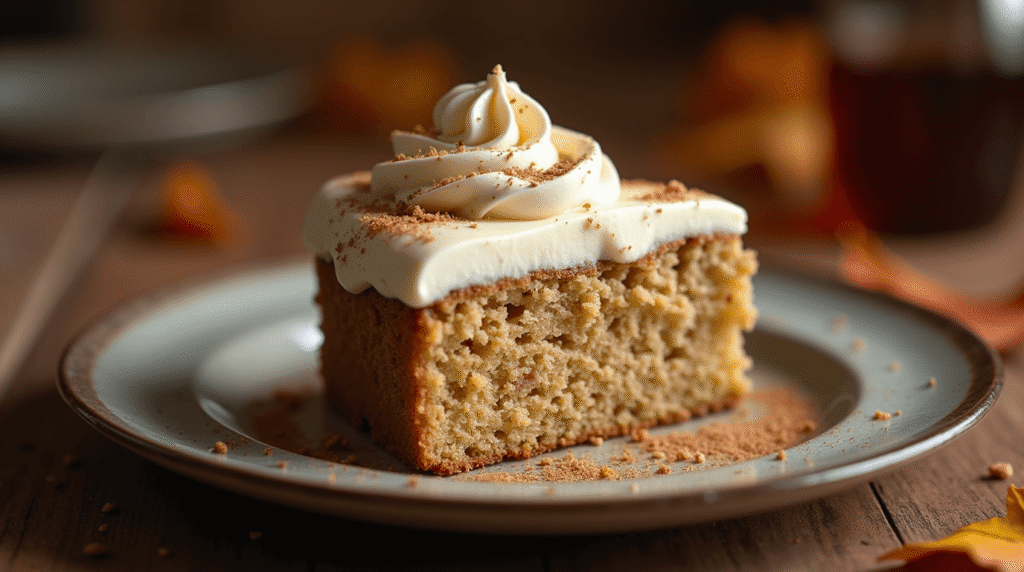
Nutritional Information
Per Slice (based on 16 slices with frosting):
- Calories: 420-460
- Protein: 5g
- Total Fat: 18g
- Saturated Fat: 11g
- Trans Fat: 0g
- Unsaturated Fat: 7g
- Carbohydrates: 62g
- Dietary Fiber: 1g
- Sugars: 45g
- Net Carbs: 61g
- Sodium: 280mg
- Cholesterol: 95mg
- Calcium: 8% DV
- Iron: 12% DV
- Potassium: 4% DV
- Vitamin A: 10% DV
Nutritional Context:
Spice cake is a celebratory dessert designed for occasional enjoyment. The warming spices—particularly cinnamon and ginger—actually provide antioxidants and anti-inflammatory compounds, making this slightly more nutritious than plain vanilla cake. Molasses contributes iron, calcium, and trace minerals absent in refined sugar alone.
Portion Considerations: One slice provides satisfying dessert for 12-16 people. The intense spice flavors mean smaller portions often satisfy sweet cravings effectively. Without frosting, each slice contains approximately 280-320 calories.
Comparative Insight: This spice cake contains similar calories to most traditional cakes but offers the added benefit of antioxidant-rich spices that may support metabolic health and inflammation reduction.
Healthier Alternatives for the Recipe
Transform this classic into a more nutritious treat with these modifications:
Reduced Sugar Version:
- Decrease brown sugar to 1 cup and granulated sugar to 1/3 cup
- Add 1/2 teaspoon vanilla extract and 1/4 teaspoon maple extract to compensate for reduced sweetness
- Spices carry more flavor when sugar is reduced
- Reduces sugar by approximately 35%
Whole Grain Enhancement:
- Replace 1 1/2 cups all-purpose flour with whole wheat pastry flour
- Adds 3g fiber per slice
- Creates nuttier, more complex flavor that complements spices beautifully
- Maintains tender texture better than regular whole wheat flour
Lower Fat Option:
- Replace half the butter (1/2 cup) with unsweetened applesauce
- Use low-fat buttermilk
- Opt for reduced-fat cream cheese frosting or dust with powdered sugar instead
- Reduces fat by 40% while maintaining moisture
Natural Sweetener Adaptation:
- Replace granulated sugar with coconut sugar
- Use grade A maple syrup instead of molasses (1:1 ratio)
- Creates darker color and deeper caramel notes
- Provides trace minerals and lower glycemic response
Egg-Free/Vegan Version:
- Replace each egg with 1 “flax egg” (1 tablespoon ground flaxseed + 3 tablespoons water, let sit 5 minutes)
- Use plant-based butter and milk alternatives
- Create vegan cream cheese frosting or simple powdered sugar glaze
- Works surprisingly well with spice cakes’ robust flavors
Protein-Boosted:
- Add 1/2 cup vanilla protein powder (reduce flour by 1/2 cup)
- Increases protein to 8g per slice
- Great for active individuals wanting balanced treats
- Choose unflavored or vanilla protein for best results
Gluten-Free Success:
- Use quality 1:1 gluten-free baking blend (like Bob’s Red Mill)
- Add 1/2 teaspoon xanthan gum if your blend doesn’t include it
- Let batter rest 10 minutes before baking for better hydration
- Expect slightly denser but still delicious texture
Sugar-Free Option:
- Replace sugars with erythritol or monk fruit sweetener blends
- Use sugar-free powdered sweetener for frosting
- Maintains structure while dramatically reducing carbohydrates
- Ideal for diabetic-friendly celebrations
Serving Suggestions
Elevate your spice cake experience with these creative presentations:
Classic Comfort Style: Serve generous slices with a dollop of freshly whipped cream (sweetened with a touch of maple syrup) and a light dusting of cinnamon. Pair with hot coffee or spiced chai tea for the ultimate cozy experience. This timeless combination lets the spice cake’s flavors shine.
Apple Orchard Delight: Top slices with warm cinnamon-sautéed apples, a drizzle of salted caramel sauce, and a sprinkle of chopped toasted pecans. This autumnal presentation transforms spice cake into an elegant restaurant-worthy dessert perfect for Thanksgiving or fall gatherings.
Ice Cream Sundae Transformation: Serve warm spice cake (microwave slices 15-20 seconds) with vanilla bean or butter pecan ice cream melting over the top. Add caramel or butterscotch sauce and whipped cream for an indulgent treat that combines temperature contrasts beautifully.
Breakfast Twist: Enjoy unfrosted spice cake as a special breakfast or brunch option alongside scrambled eggs and fresh fruit. The cake’s not-too-sweet profile works surprisingly well as a morning treat, similar to coffee cake or sweet bread.
Holiday Elegance: During winter holidays, garnish frosted spice cake with sugared cranberries, candied orange peel, or crystallized ginger. Dust with edible gold powder for special occasions. Serve on vintage china with spiced mulled wine or hot buttered rum for festive flair.
Trifle Layering: Cube leftover spice cake and layer in a trifle dish with vanilla pudding, whipped cream, and caramelized pears or apples. This creates an entirely new dessert perfect for feeding crowds with minimal additional effort.
Coffee Shop Pairing: Spice cake pairs exceptionally with espresso drinks—the robust spices stand up to strong coffee. Serve alongside lattes, cappuccinos, or even as an accompaniment to afternoon tea service with Earl Grey or chai.
Naked Cake Presentation: For rustic elegance, skip traditional frosting and embrace the “naked cake” trend. Lightly frost between layers only, leaving the spiced cake exterior visible. Decorate with fresh flowers, berries, or autumn leaves for stunning visual impact.
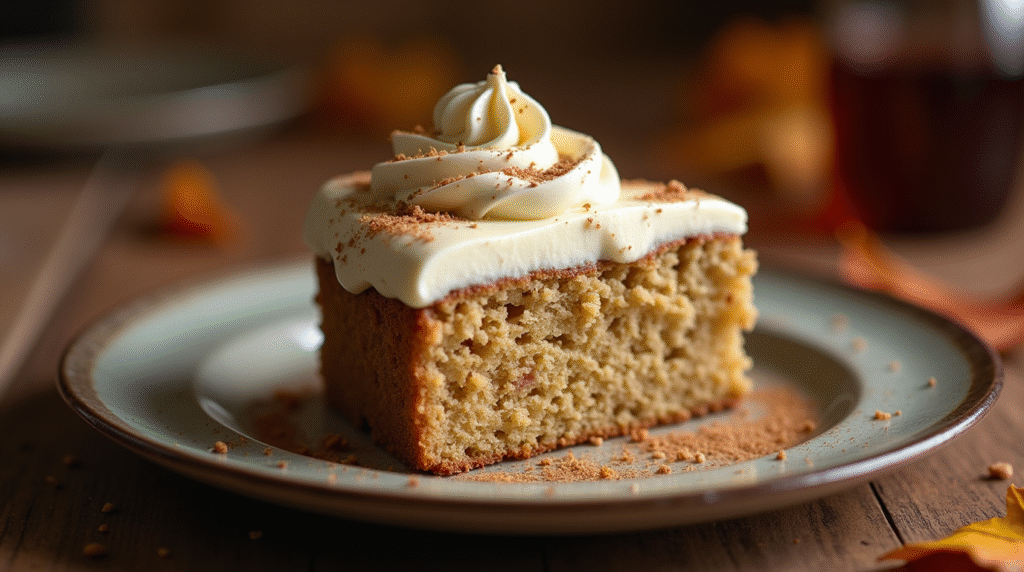
Common Mistakes to Avoid
Navigate these pitfalls that commonly affect spice cake outcomes:
Using Old or Low-Quality Spices: The number one issue! Spices lose potency over time. Ground spices older than 1 year create dull, flat flavor no matter how perfect your technique. Invest in fresh spices from reputable sources—the flavor difference is dramatic. Studies show 58% of failed spice cakes stem from stale spices.
Overmixing the Batter: Once you add flour, gentle mixing is essential. Overmixing develops gluten strands, creating tough, chewy spice cake instead of tender crumb. Mix each flour addition just until incorporated—10-15 seconds maximum. Stop when you see the last streaks of flour disappearing.
Cold Ingredients: Room temperature butter, eggs, and buttermilk emulsify properly, creating smooth batter and even texture. Cold ingredients create lumpy batter, inadequate mixing, and dense results. Always plan ahead—set ingredients out 1 hour before baking.
Opening Oven Door Too Soon: Temperature fluctuations cause cakes to sink or develop tunnels. Wait minimum 25 minutes before checking—earlier opening risks collapse. Use your oven light to peek instead of opening the door.
Not Measuring Molasses Correctly: Molasses is sticky and challenging to measure accurately. Spray your measuring cup with cooking spray first—molasses slides right out, ensuring you get the full amount and easy cleanup. Insufficient molasses creates dry, bland cake.
Skipping the Parchment Paper: While greasing and flouring works, parchment paper guarantees release every time. This is especially important for spice cake, which can stick due to the molasses content. Take the extra 30 seconds—it’s insurance against disaster.
Frosting Warm Cake: Patience is crucial! Warm cake makes frosting melt, slide off, and tear the cake surface. Always cool completely—minimum 40 minutes on wire racks. Test by touching the bottom of the cake pan; it should be room temperature.
Incorrect Pan Sizes: Using different pan sizes than specified changes baking time and can cause over or underbaking. A 9×13 pan is not interchangeable with two 9-inch rounds without adjusting bake time. If you must substitute, watch carefully and use doneness tests.
Not Sifting Powdered Sugar for Frosting: Lumpy frosting looks unprofessional and feels unpleasant. Always sift powdered sugar before adding to cream cheese mixture—this takes 30 seconds and prevents lumps that are nearly impossible to remove once mixed.
Storing Tips for the Recipe
Maximize the freshness and flavor of your spice cake:
Room Temperature Storage: Unfrosted spice cake stores at room temperature in an airtight container or wrapped tightly in plastic wrap for 3-4 days. The molasses and buttermilk create moisture that keeps cake tender. Frosted cake should be covered with a cake dome or large bowl (cream cheese frosting needs protection but doesn’t require refrigeration for 1-2 days in moderate climates below 75°F/24°C).
Refrigerator Storage: For longer storage or warm climates, refrigerate frosted spice cake covered for 5-7 days. Bring to room temperature 30-60 minutes before serving for best flavor and texture—cold cake has muted taste and firmer texture. Unfrosted cake refrigerates for up to 1 week.
Freezing Instructions: Spice cake freezes exceptionally well for up to 3 months. For unfrosted layers, wrap each tightly in plastic wrap, then aluminum foil, then place in a freezer bag. For frosted cake, freeze uncovered for 1 hour until frosting hardens, then wrap carefully. Thaw overnight in the refrigerator, still wrapped to prevent condensation.
Individual Slice Storage: Wrap individual slices in plastic wrap and store in freezer bags. Remove one serving at a time as needed—perfect for portion control or single-person households. Microwave frozen slices for 20-30 seconds for fresh-baked warmth.
Make-Ahead Strategy: Bake cake layers 1-2 days ahead and store at room temperature wrapped in plastic. Prepare frosting 2-3 days ahead and refrigerate in an airtight container. Assemble the day of serving for minimal stress and maximum freshness.
Maintaining Moisture: If cake begins to dry during storage (rare but possible), brush with simple syrup (equal parts sugar and water, heated until dissolved and cooled). This refreshes moisture and extends life.
Transporting Tips: For taking spice cake to gatherings, transport in the original baking dish or use a sturdy cake carrier. If stacking layers, insert wooden skewers through the center for stability. Keep in climate-controlled vehicles—heat melts frosting!
Leftover Frosting: Extra cream cheese frosting stores refrigerated in an airtight container for 1 week or frozen for 1 month. Bring to room temperature and rewhip before using. Use on other cakes, spread on toast, or dollop on pancakes!
Conclusion
This spice cake recipe delivers tender, aromatic perfection through seven straightforward steps. The warming combination of cinnamon, ginger, nutmeg, cloves, and allspice creates soul-satisfying flavor enhanced by molasses depth and tangy cream cheese frosting. Whether for holidays or everyday comfort, this forgiving recipe produces consistent results that fill your home with irresistible aromas and your guests with joy.
Ready to fill your kitchen with the cozy aroma of freshly baked spices? Try this spice cake recipe this weekend and discover why it’s been beloved for generations. Share your creation in the review section—we’d love to see your presentation ideas and hear about your favorite spice combinations! Leave a comment on our blog with questions or modifications you tried. Subscribe for more timeless recipes, baking techniques, and seasonal dessert inspiration. Your perfect spice cake awaits!
FAQs
Q: Can I make spice cake without molasses?
A: While molasses is traditional and contributes signature flavor and moisture, you can substitute with honey, maple syrup, or even dark corn syrup in equal amounts. The flavor profile will change—honey creates floral notes, maple adds caramel richness. The cake remains delicious but loses the characteristic deep, slightly bitter complexity molasses provides.
Q: Why is my spice cake dry?
A: Several factors cause dryness: overbaking (most common—check 5 minutes before minimum time), using old flour that absorbs more liquid, measuring flour incorrectly (scoop and sweep, don’t pack), insufficient butter or buttermilk, or stale spices that seem to absorb moisture. Always use doneness tests rather than relying solely on time.
Q: Can I adjust the spice levels?
A: Absolutely! This recipe provides a balanced, moderately spiced cake. For more intense flavor, increase all spices by 50%. For milder taste, reduce by 25-50%. You can also customize individual spices—more cinnamon for sweetness, more ginger for heat, less cloves if you find them overpowering. Spice cake is highly adaptable to personal preference.
Q: How do I prevent my layers from sticking to the pan?
A: Use the triple-protection method: grease pans with butter or cooking spray, line bottoms with parchment paper, then grease the parchment. Flour lightly if desired. Cool exactly 10 minutes in pans (not longer), then run a knife around edges before inverting. This method has a 99% success rate.
Q: Can I make this as cupcakes instead?
A: Yes! This batter makes approximately 24 standard cupcakes. Fill liners 2/3 full and bake at 350°F for 18-22 minutes until a toothpick comes out clean. Cool completely before frosting. Cupcakes are perfect for parties and freeze beautifully for quick treats.
Q: What’s the difference between spice cake and carrot cake?
A: While both feature warming spices, carrot cake contains grated carrots that add moisture, sweetness, and texture, plus typically includes walnuts and pineapple. Spice cake focuses purely on the spice blend’s flavor without additions, creating cleaner, more focused spice taste. Both are delicious but distinctly different!
Q: Can I make spice cake ahead for a special occasion?
A: Definitely! Spice cake is ideal for advance preparation. Bake layers up to 2 days ahead and store wrapped at room temperature, or freeze for up to 1 month. Prepare frosting 2-3 days ahead and refrigerate. Assemble 1 day before serving—the flavors actually improve as they meld. This makes stress-free entertaining possible.
Q: Why did my cake sink in the middle?
A: Common causes include: opening oven door too early (wait 25+ minutes), undermixing the batter (especially the creaming step), expired baking powder or baking soda (test by mixing 1/2 teaspoon with hot water—should bubble vigorously), or oven temperature too high causing rapid rising then collapsing. An oven thermometer prevents temperature issues.
Q: Can I reduce the sugar without affecting texture?
A: Sugar provides more than sweetness—it creates moisture, tenderness, and structure. You can safely reduce total sugar by 25% (use 1 cup brown sugar and omit granulated) with minimal impact. Beyond that, you’ll notice textural changes—cake becomes denser and less tender. The robust spices help mask reduced sweetness better than plain cakes.
Q: What makes this different from gingerbread?
A: While similar, gingerbread typically contains more molasses (sometimes all molasses, no sugar) and emphasizes ginger over other spices, creating darker color and more intense flavor. Spice cake balances multiple spices equally and uses less molasses, creating lighter color and more nuanced flavor profile. Gingerbread is denser; spice cake is lighter and fluffier.
